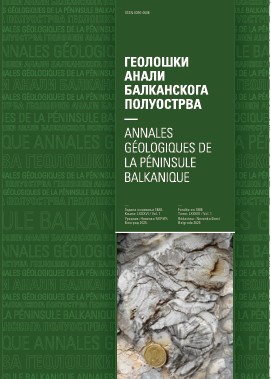60 years of the Serbo-Macedonian Unit concept: From Cadomian towards Alpine tectonic frameworks
Abstract
The study represents a summary of the hitherto tectonic concepts revolving around a peri-Gondwanan fragment referred to as the Serbo-Macedonian Unit. The Serbo-Macedonian Unit as a gneiss-dominated basement segment is positioned in the proximity of the Baltican craton (peri-Moesian realm). This area represents a repository of the transferred broadly similar thus highly complex, elongated polycrystalline vestiges of the Pan-African inheritance. This peculiar far-travelled composite crustal fragment of north Gondwana is amalgamated on top of the Supragetic unit during the late Variscan peri-Moesian amalgamation. However, the original early Paleozoic tectonostratigraphic configuration of these three intimate green schistand medium- to high-grade gneiss amphibolite basement vestiges (Serbo-Macedonian/Supragetic and Getic) is further perplexed by the presence of poorly documented pre-Variscan (Ordovician?) lithospheric-scale event. The Pan-African to Lower Paleozoic subduction/magmatic arc stage led to the amalgamation, breakup and dispersal of a cluster of peri-Gondwanan continental and oceanic terranes. Breakup and dispersal from the northern shore of the Gondwanan active margin triggered the development of the Paleozoic deep-marine sedimentary cover (“Kučaj unit” or Getic unit). To make matter more complex, prior the Lower Paleozoic terrane agglomeration and subsequent dispersal, it appears that a Lower Paleozoic geodynamic linkage is additionally marked by the poorly investigated cross-lithospheric event. This event connects the outboard oceanic Supragetic/“Kučaj” succession with a segment of the former north Gondwanan protobasin (juvenile Serbo-Macedonian Unit).
Copyright (c) 2020 Geološki anali Balkanskoga poluostrva

This work is licensed under a Creative Commons Attribution 4.0 International License.










